PET Preliminary English Test Speaking 2

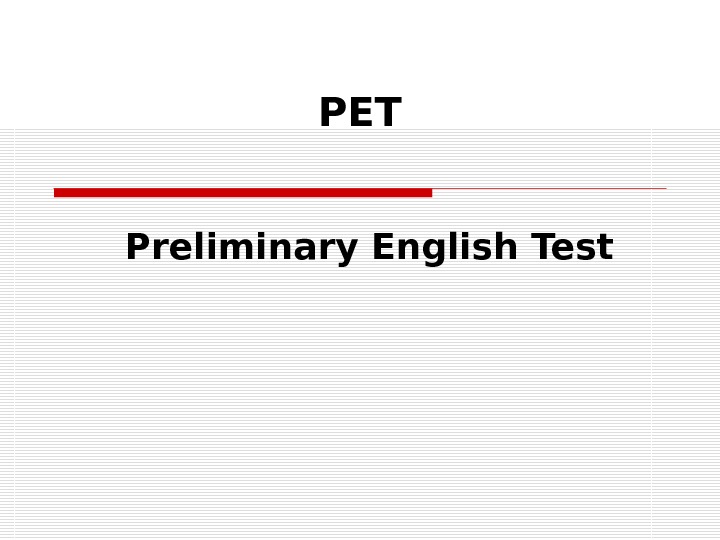
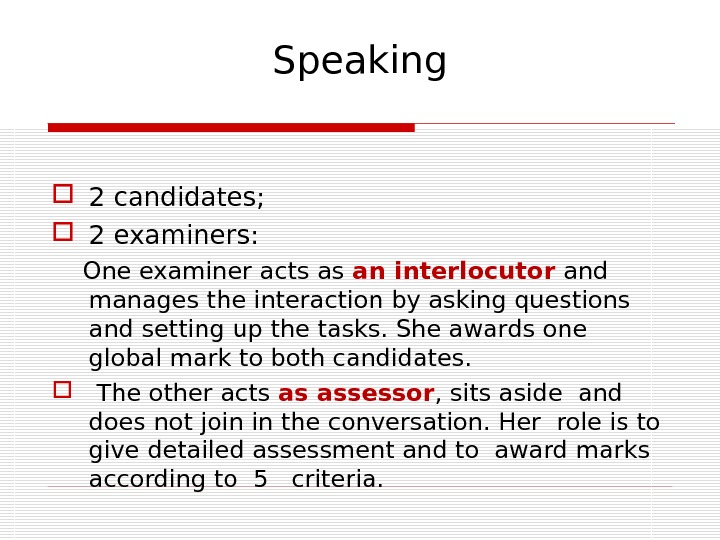
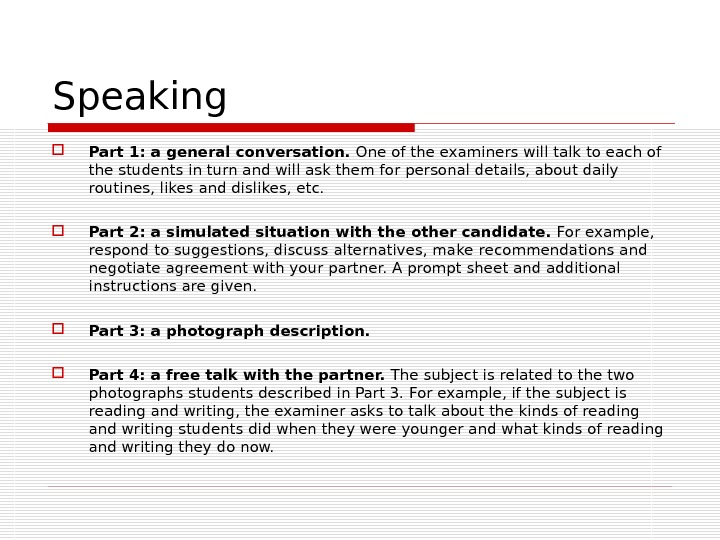
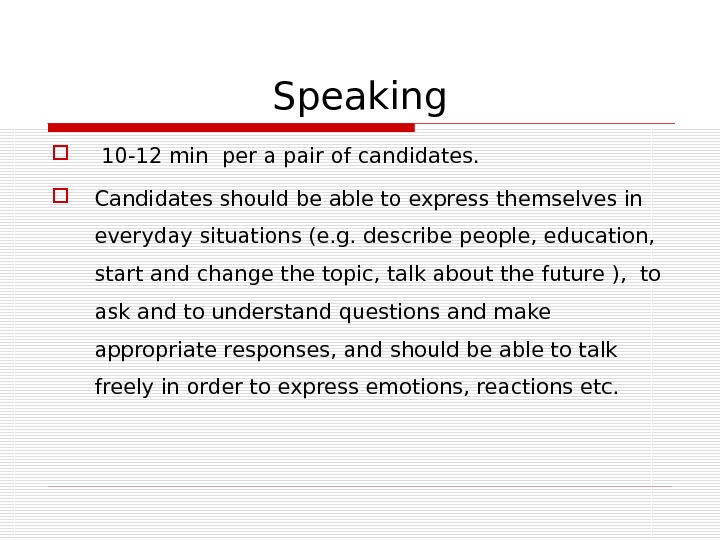
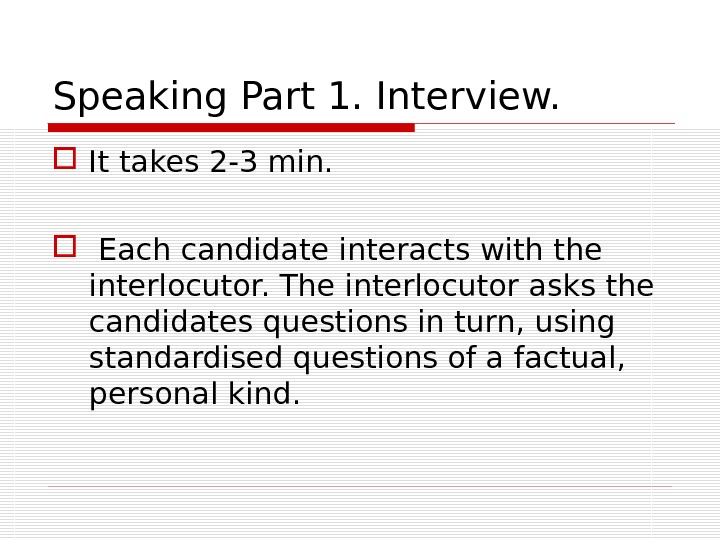
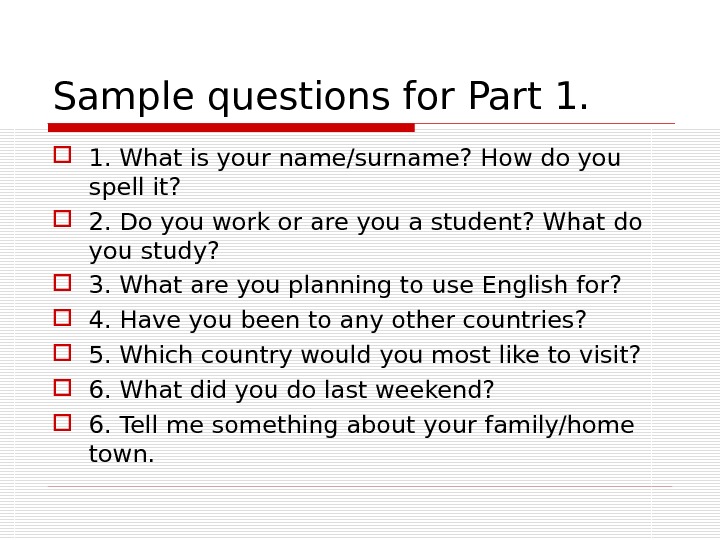
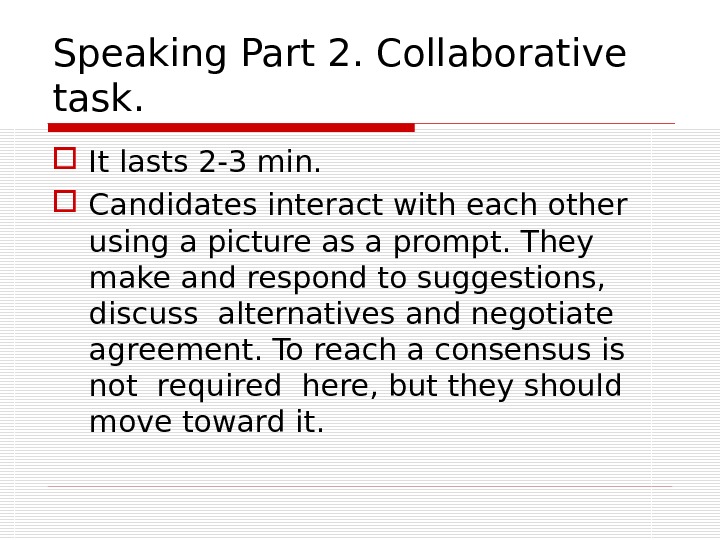

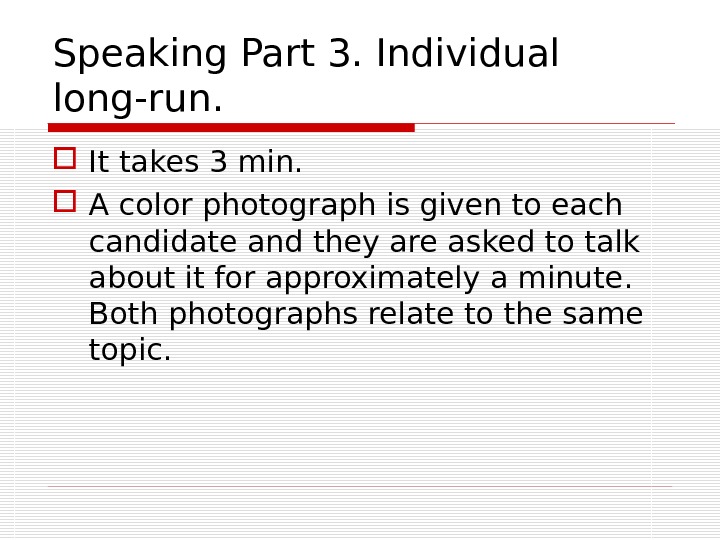
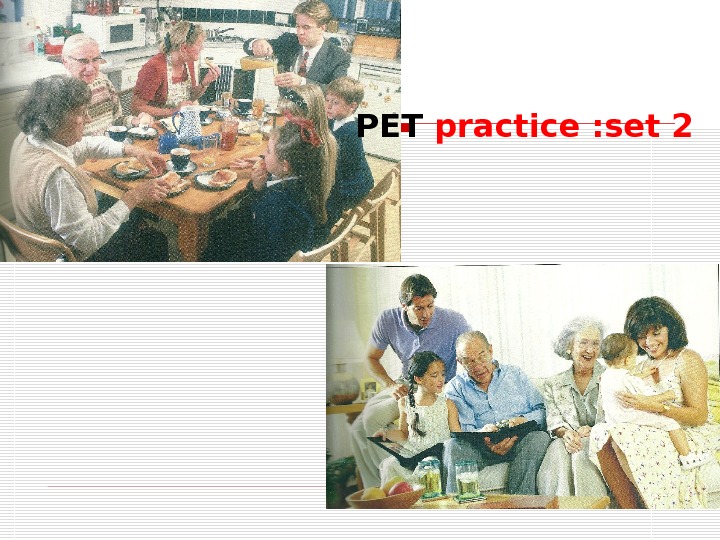


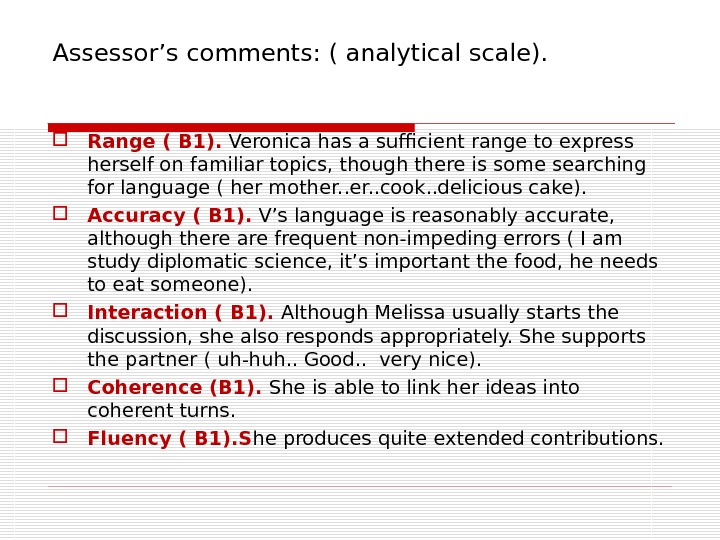
- Размер: 1.4 Mегабайта
- Количество слайдов: 13
Описание презентации PET Preliminary English Test Speaking 2 по слайдам
 PET Preliminary English Test
PET Preliminary English Test
 Speaking 2 candidates; 2 examiners: One examiner acts as an interlocutor and manages the interaction by asking questions and setting up the tasks. She awards one global mark to both candidates. The other acts as assessor , sits aside and does not join in the conversation. Her role is to give detailed assessment and to award marks according to 5 criteria.
Speaking 2 candidates; 2 examiners: One examiner acts as an interlocutor and manages the interaction by asking questions and setting up the tasks. She awards one global mark to both candidates. The other acts as assessor , sits aside and does not join in the conversation. Her role is to give detailed assessment and to award marks according to 5 criteria.
 Speaking Part 1: a general conversation. One of the examiners will talk to each of the students in turn and will ask them for personal details, about daily routines, likes and dislikes, etc. Part 2 : a simulated situation with the other candidate. For example, respond to suggestions, discuss alternatives, make recommendations and negotiate agreement with your partner. A prompt sheet and additional instructions are given. Part 3: a photograph description. Part 4: a free talk with the partner. The subject is related to the two photographs students described in Part 3. For example, if the subject is reading and writing, the examiner asks to talk about the kinds of reading and writing students did when they were younger and what kinds of reading and writing they do now.
Speaking Part 1: a general conversation. One of the examiners will talk to each of the students in turn and will ask them for personal details, about daily routines, likes and dislikes, etc. Part 2 : a simulated situation with the other candidate. For example, respond to suggestions, discuss alternatives, make recommendations and negotiate agreement with your partner. A prompt sheet and additional instructions are given. Part 3: a photograph description. Part 4: a free talk with the partner. The subject is related to the two photographs students described in Part 3. For example, if the subject is reading and writing, the examiner asks to talk about the kinds of reading and writing students did when they were younger and what kinds of reading and writing they do now.
 Speaking 10 -12 min per a pair of candidates. Candidates should be able to express themselves in everyday situations (e. g. describe people, education, start and change the topic, talk about the future ), to ask and to understand questions and make appropriate responses, and should be able to talk freely in order to express emotions, reactions etc.
Speaking 10 -12 min per a pair of candidates. Candidates should be able to express themselves in everyday situations (e. g. describe people, education, start and change the topic, talk about the future ), to ask and to understand questions and make appropriate responses, and should be able to talk freely in order to express emotions, reactions etc.
 Speaking Part 1. Interview. It takes 2 -3 min. Each candidate interacts with the interlocutor. The interlocutor asks the candidates questions in turn, using standardised questions of a factual, personal kind.
Speaking Part 1. Interview. It takes 2 -3 min. Each candidate interacts with the interlocutor. The interlocutor asks the candidates questions in turn, using standardised questions of a factual, personal kind.
 Sample questions for Part 1. What is your name/surname? How do you spell it? 2. Do you work or are you a student? What do you study? 3. What are you planning to use English for? 4. Have you been to any other countries? 5. Which country would you most like to visit? 6. What did you do last weekend? 6. Tell me something about your family/home town.
Sample questions for Part 1. What is your name/surname? How do you spell it? 2. Do you work or are you a student? What do you study? 3. What are you planning to use English for? 4. Have you been to any other countries? 5. Which country would you most like to visit? 6. What did you do last weekend? 6. Tell me something about your family/home town.
 Speaking Part 2. Collaborative task. It lasts 2 -3 min. Candidates interact with each other using a picture as a prompt. They make and respond to suggestions, discuss alternatives and negotiate agreement. To reach a consensus is not required here, but they should move toward it.
Speaking Part 2. Collaborative task. It lasts 2 -3 min. Candidates interact with each other using a picture as a prompt. They make and respond to suggestions, discuss alternatives and negotiate agreement. To reach a consensus is not required here, but they should move toward it.
 Sample picture for Part 2. I’m going to describe a situation to you. A friend of yours is planning to spend 6 months in England to improve her English. Talk together about the things she will need in England decide which are the most important things to bring with her. Here is a picture with some ideas to help you.
Sample picture for Part 2. I’m going to describe a situation to you. A friend of yours is planning to spend 6 months in England to improve her English. Talk together about the things she will need in England decide which are the most important things to bring with her. Here is a picture with some ideas to help you.
 Speaking Part 3. Individual long-run. It takes 3 min. A color photograph is given to each candidate and they are asked to talk about it for approximately a minute. Both photographs relate to the same topic.
Speaking Part 3. Individual long-run. It takes 3 min. A color photograph is given to each candidate and they are asked to talk about it for approximately a minute. Both photographs relate to the same topic.
 PET practice : set
PET practice : set
 It lasts 3 min. Candidates interact with each other. The topic of the conversation develops theme from Part 3. The candidates talk together about their opinions, likes/dislikes, preferences, experiences, habits, etc. Speaking Part 4. Discussion.
It lasts 3 min. Candidates interact with each other. The topic of the conversation develops theme from Part 3. The candidates talk together about their opinions, likes/dislikes, preferences, experiences, habits, etc. Speaking Part 4. Discussion.
 Assessor’s comments: global achievement mark. Melissa is able to keep going and produces linked phrases with a degree of accuracy in predictable situations, but with some evident pausing to organise the language. This places her in B 1 band. She produces more connected language than would be associated with an A 2 performance, but lacks linguistic repertoire to produce the sustained language associated with B 2.
Assessor’s comments: global achievement mark. Melissa is able to keep going and produces linked phrases with a degree of accuracy in predictable situations, but with some evident pausing to organise the language. This places her in B 1 band. She produces more connected language than would be associated with an A 2 performance, but lacks linguistic repertoire to produce the sustained language associated with B 2.
 Assessor’s comments: ( analytical scale). Range ( B 1). Veronica has a sufficient range to express herself on familiar topics, though there is some searching for language ( her mother. . cook. . delicious cake). Accuracy ( B 1). V’s language is reasonably accurate, although there are frequent non-impeding errors ( I am study diplomatic science, it’s important the food, he needs to eat someone). Interaction ( B 1). Although Melissa usually starts the discussion, she also responds appropriately. She supports the partner ( uh-huh. . Good. . very nice). Coherence (B 1). She is able to link her ideas into coherent turns. Fluency ( B 1). S he produces quite extended contributions.
Assessor’s comments: ( analytical scale). Range ( B 1). Veronica has a sufficient range to express herself on familiar topics, though there is some searching for language ( her mother. . cook. . delicious cake). Accuracy ( B 1). V’s language is reasonably accurate, although there are frequent non-impeding errors ( I am study diplomatic science, it’s important the food, he needs to eat someone). Interaction ( B 1). Although Melissa usually starts the discussion, she also responds appropriately. She supports the partner ( uh-huh. . Good. . very nice). Coherence (B 1). She is able to link her ideas into coherent turns. Fluency ( B 1). S he produces quite extended contributions.

